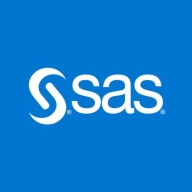

SAS Enterprise Miner and Saturn Cloud are competing in the domain of data analytics and machine learning. Saturn Cloud has the upper hand due to its flexibility and scalability as indicated by the comparison.
Features: SAS Enterprise Miner offers advanced statistical analysis tools, seamless data integration, and a comprehensive suite for predictive modeling. Saturn Cloud provides support for Python-based workflows, collaboration features, and effortless scalability of computations in the cloud.
Room for Improvement: SAS Enterprise Miner can improve in areas such as reducing complexity in deployment, enhancing system resource utilization, and speeding up response times in customer service. Saturn Cloud could enhance its service by offering more diverse integration capabilities, additional advanced analytics features, and further simplifying user interface navigation.
Ease of Deployment and Customer Service: SAS Enterprise Miner often requires a complex on-premise setup which can impact deployment speed, though it offers strong but slower responding support. Saturn Cloud's cloud-native model enables fast setup, effortless scaling, and offers more responsive customer service.
Pricing and ROI: SAS Enterprise Miner demands substantial initial setup costs and infrastructure investment, yet provides a strong ROI for large enterprises. Saturn Cloud's pay-as-you-go model presents lower initial costs and efficient scalability, making it a cost-effective option with a compelling ROI for organizations seeking scalable solutions.

Saturn Cloud is a cloud-based data science and machine learning platform that provides a scalable, flexible, and easy-to-use environment for data scientists and machine learning engineers. Saturn Cloud offers a variety of features and tools for data science, including: Compute resources (including CPUs, GPUs, and Dask clusters), Storage (object, block, and ephemeral storage), Networking, a variety of integrations with ML tools such as JupyterLab, RStudio, and TensorFlow.
Saturn Cloud is a good choice for data scientists and machine learning engineers who need a scalable, flexible, and easy-to-use environment.
Saturn Cloud also makes it easy to collaborate with other data scientists and machine learning engineers. You can share projects, notebooks, and data with others, and you can track changes to your work.
We monitor all Data Science Platforms reviews to prevent fraudulent reviews and keep review quality high. We do not post reviews by company employees or direct competitors. We validate each review for authenticity via cross-reference with LinkedIn, and personal follow-up with the reviewer when necessary.